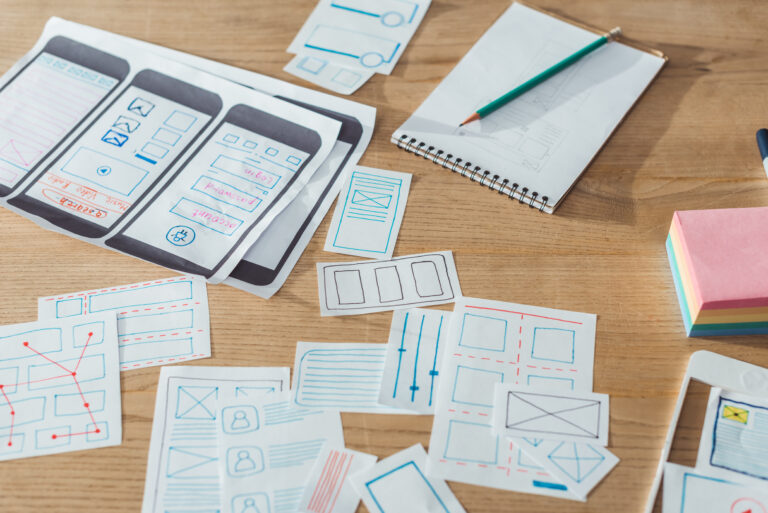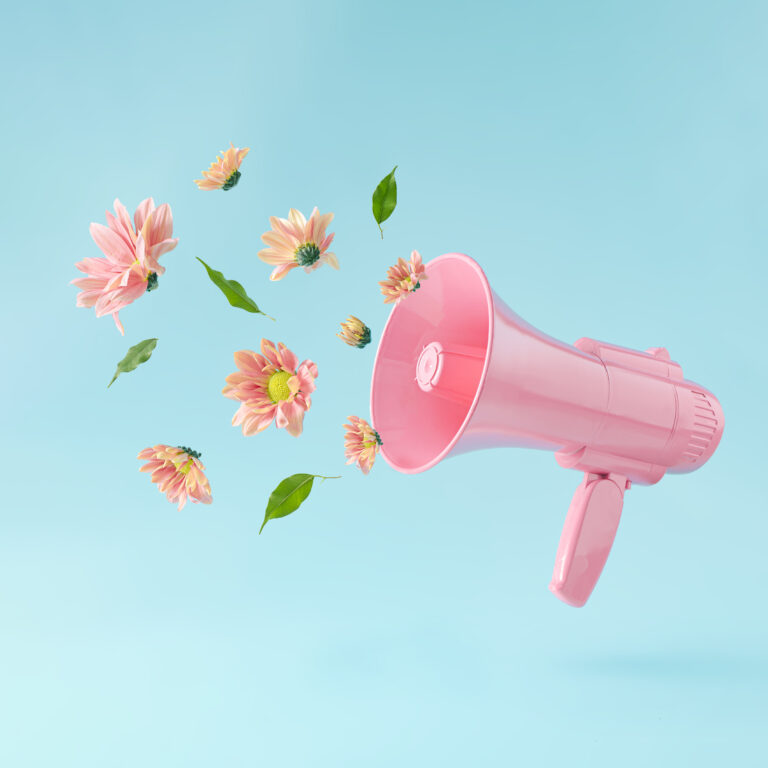The secret to conversion is not in the copy or the design alone — it’s in the combination of both. Good design can make your layout copy more effective, and engaging copy can bring out more in your design.
Nielsen Norman’s How People Read Online report, covering 23 years of eye-tracking research, confirms that online users only skim a webpage for relevant information. This means there is a very short amount of time to make an impression and get a message across.
In terms of boosting conversion rates, it pays to focus on designing and copywriting specifically for conversion. The end goal is to create a well-designed web page with relevant, persuasive, and actionable content.
Planning Layout Copy
Proper design is key to selling conversion copy. Conversion-focused design is the process of designing a website with the primary goal of increasing conversions. It centers on maximizing the number of visitors who take the desired action on your site, whether that’s subscribing to a newsletter, making a purchase, or filling out a form.
According to PR Newswire, 50% of internet users form an opinion of a business based on website design. Further data showed that visitors liked seeing images, colors, and videos when visiting web pages.

First impressions are crucial in conversion-focused design. Several key elements include the following:
1. Clear Value Proposition
A website’s value proposition is the main reason a visitor would stay on the site and take action. In a well-designed landing page, it is front and center, easy to read and understand, and supported by strong visuals.
2. Clean Design
A clean, well-organized design makes it easy for visitors to find what they’re looking for. The layout is usually simple, with a clear hierarchy of information, logical flow, and prominently placed calls-to-action.
3. Persuasive Copy
When designing for conversion, a website’s copy should be persuasive and convincing without being too sales-driven. It should focus on the benefits of taking action and address any potential objections a visitor might have. And it should be written in a style that’s easy to read and digest.

4. Effective Call to Action
A call to action (CTA) is what you want your visitors to do on your website. It could be anything from subscribing to a newsletter or downloading a white paper, to making a purchase or filling out a form.
In conversion-focused design, the CTA is prominently placed and easy to find, and the copy is clear and concise. The button itself stands out so that it can be easily clicked.
Principles of Conversion-focused Design
Optimizing web design for conversion involves more than just slapping together a few pretty pages. There are important principles to keep in mind to increase your chances of conversion success.
Simplicity
The best conversion-focused designs are usually those that are the simplest. Stick to a single primary call-to-action and make sure it’s prominently displayed. Too many options can overwhelm visitors and lead to decision paralysis.
Applying design psychology can also be helpful in creating a clean design.
Layout Copy for Clarity
Any copy on the webpage should be clear and concise, and free of technical jargon or ambiguity. Visitors should know exactly what you want them to do and why it’s in their best interest to do it. That’s why it’s important to learn how to properly layout copy.
Visitors will consume copy easily if the copy layout follows copy chunking. This is a method of breaking text or multimedia into sizable chunks to help users process information better.

Credibility
Your website should inspire trust and confidence in your visitors. Factoring in testimonials, customer reviews, awards, and other social proof in the layout shows that you’re a reputable company that can be trusted.
Emotion
An effective way to increase conversion rates is to tap into the emotions of your visitors. Use images and color palettes that evoke positive feelings like happiness, hope, or excitement. Applying design psychology can help nail this principle.
Urgency
Creating a sense of urgency can encourage visitors to take action before it’s too late. Aside from utilizing language that communicates the limited time or quantity available, design elements like the color of a button should be attention-grabbing.

Why Conversion Requires Layout Copy
First of all, conversion copy refers to persuasive copy that influences a person to take the desired action. Whether it’s signing up for a newsletter or making a purchase, the goal of conversion copy has one thing in common: it’s written with a singular focus on persuasion.
However, the copy can only be persuasive if it targets the right audience, presents a clear value proposition, and is supported by strong design.
Principles of Conversion Copy
Successful conversion copywriting isn’t simply about knowing what words to use – it’s also about how you say it and who you say it to. These basic principles will lay the foundation of your conversion copywriting success.
Know Your Audience
The first step in writing conversion copy is understanding who you’re writing for. The more you know about your audience, the better you can tailor your message to appeal to their specific needs and desires.
When creating buyer personas, consider factors like age, gender, location, interests, and pain points. Adding more details will help you form a solid understanding of who your target customer is. You can begin crafting copy that speaks directly to them.
User behavior is not only crucial in driving your copy, it should also drive your whole marketing strategy.

Discover Pain Points
Everyone has pain points – the things that keep them up at night. A business owner’s job is to identify these pain points and have them addressed in the copy.
One way to do this is by using the “problem/agitation/solution” method. Start by outlining the problem your target customer is facing, then agitate that problem by highlighting how it’s affecting their lives. Finally, provide a solution in the form of your product or service.
Create a Sense of Urgency
A helpful strategy to implement is to create a “fear of missing out.” People are more likely to take action when they feel a sense of urgency. Using words and phrases like “act now,” “limited time offer,” or “while supplies last.” are examples of FOMO marketing. You can also highlight deadlines or scarcity (e.g., only 10 spots left).
Final Words
Design and copy working together in synergy is vital for any website or sales page to achieve a high conversion rate. By applying the principles in this article, you can increase the chances of your pages becoming conversion machines. For more advice about boosting conversion, subscribe today (right sidebar). You will receive actionable marketing advice in your inbox without a bunch of endless sales pitches!

